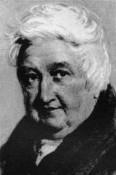Planning worship?
Check out our sister site, ZeteoSearch.org,
for 20+ additional resources related to your search.
- |
User Links
Search Results
For me to live is Christ
Author: Peter Henry Kelway Tongeman (b. 1929) Meter: 6.6.8.6 Appears in 2 hymnals Topics: The Holy Spirit The Church Celebrates - Confirmation; Renewal; Service Used With Tune: ST. MICHAEL
For me to live is Christ
ST. MICHAEL
Meter: 6.6.8.6 Appears in 318 hymnals Composer and/or Arranger: William Crotch (1775-1847) Tune Sources: Derived from melody for 'Psalm 101' in French-Genevan Psalter, 1551; arranged Revised Church Hymnary, 1927 Tune Key: G Major Incipit: 51322 35432 21176 Used With Text: For me to live is Christ
ST. MICHAEL
For me to live is Christ
Author: Peter Henry Kelway Tongeman (b. 1929) Hymnal: Church Hymnary (4th ed.) #643 (2005) Meter: 6.6.8.6 Topics: The Holy Spirit The Church Celebrates - Confirmation; Renewal; Service Languages: English Tune Title: ST. MICHAEL
For me to live is Christ
For me to live is Christ
Author: Peter Henry Kelway Tongeman (b. 1929) Hymnal: Hymns of Glory, Songs of Praise #643 (2008) Meter: 6.6.8.6 Topics: The Holy Spirit The Church Celebrates - Confirmation; Renewal; Service Languages: English Tune Title: ST. MICHAEL
For me to live is Christ
William Crotch

1775 - 1847 Person Name: William Crotch (1775-1847) Adapter of "ST. MICHAEL" in Church Hymnary (4th ed.) William Crotch (5 July 1775 – 29 December 1847) was an English composer, organist and artist.
Born in Norwich, Norfolk to a master carpenter he showed early musical talent as a child prodigy. The three and a half year old Master William Crotch was taken to London by his ambitious mother, where he not only played on the organ of the Chapel Royal in St James's Palace, but for King George III. The London Magazine of April 1779 records:
He appears to be fondest of solemn tunes and church musick, particularly the 104th Psalm. As soon as he has finished a regular tune, or part of a tune, or played some little fancy notes of his own, he stops, and has some of the pranks of a wanton boy; some of the company then generally give him a cake, an apple, or an orange, to induce him to play again...
Crotch was later to observe that this experience led him to become a rather spoiled child, excessively indulged so that he would perform.
He was for a time organist at Christ Church, Oxford, from which he was later to graduate with a Bachelor of Music degree.
His composition The Captivity of Judah was played at Trinity Hall, Cambridge, on 4 June 1789; his most successful composition in adulthood was the oratorio Palestine (1812). He may have composed the Westminster Chimes in 1793.
In 1797 Crotch was given a professorship at Oxford University, and in 1799 he acquired a doctorate in music. While at Oxford, he became acquainted with the musician and artist John Malchair, and took up sketching. He followed Malchair's style in recording the exact time and date of each of his pictures, and when he met John Constable in London in 1805, he passed the habit along to the more famous artist.
In 1834, to commemorate the installation of the Duke of Wellington as chancellor of the University of Oxford, Crotch penned a second oratorio titled The Captivity of Judah. The 1834 work bears little resemblance to the oratorio he wrote as a child in 1789.
In 1822, Crotch was appointed to the Royal Academy of Music as its first Principal, but resigned ten years later.[2] He spent his last years at his son's house in Taunton, Somerset, where he died suddenly in 1847. Among his notable pupils were William Sterndale Bennett, Lucy Anderson, Stephen Codman, George Job Elvey, Cipriani Potter, and Charles Kensington Salaman
--en.wikipedia.org/
William Crotch
Peter Tongeman
1929 - 2009 Person Name: Peter Henry Kelway Tongeman (b. 1929) Author of "For me to live is Christ" in Church Hymnary (4th ed.)
Peter Tongeman


 My Starred Hymns
My Starred Hymns


